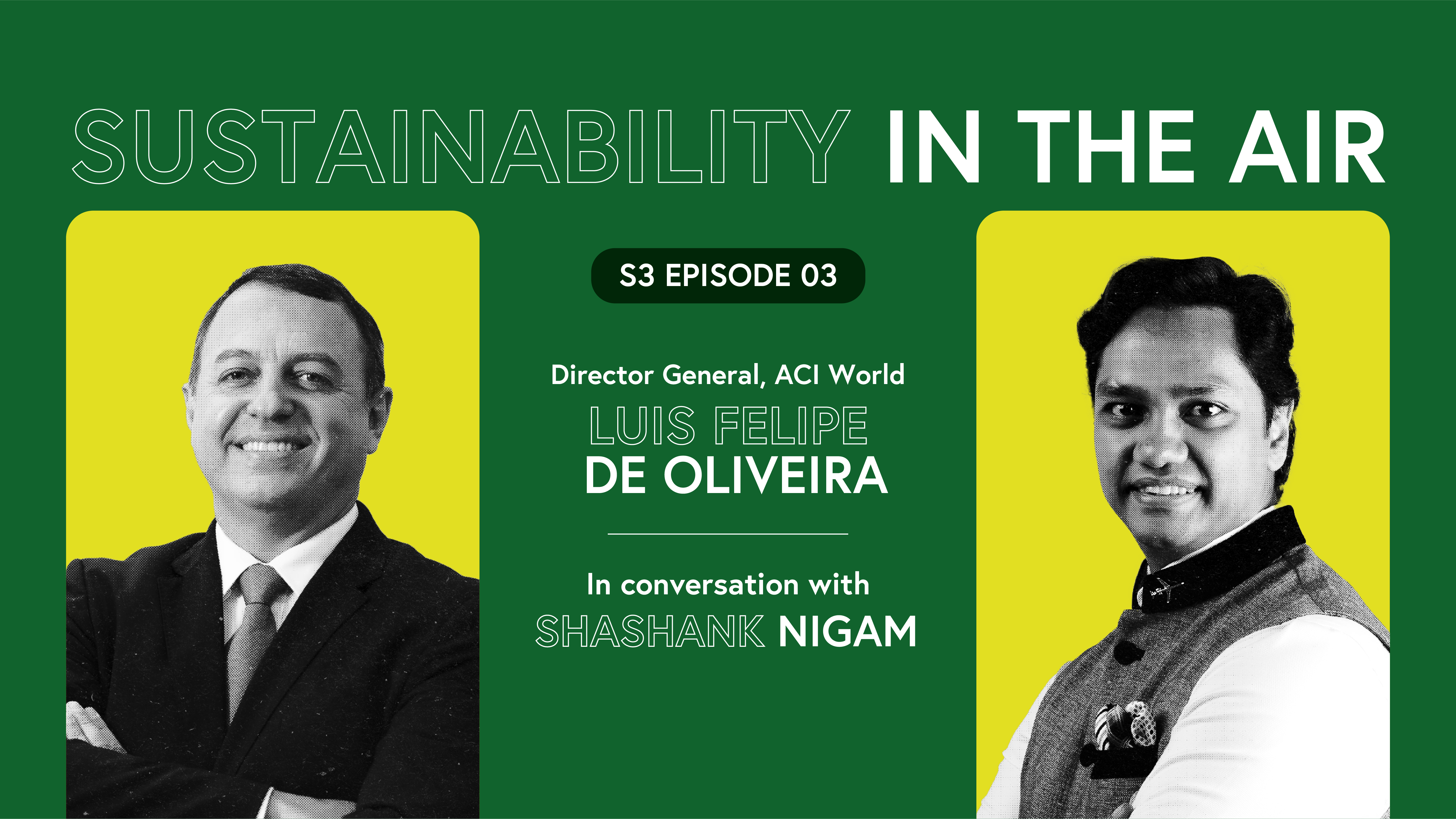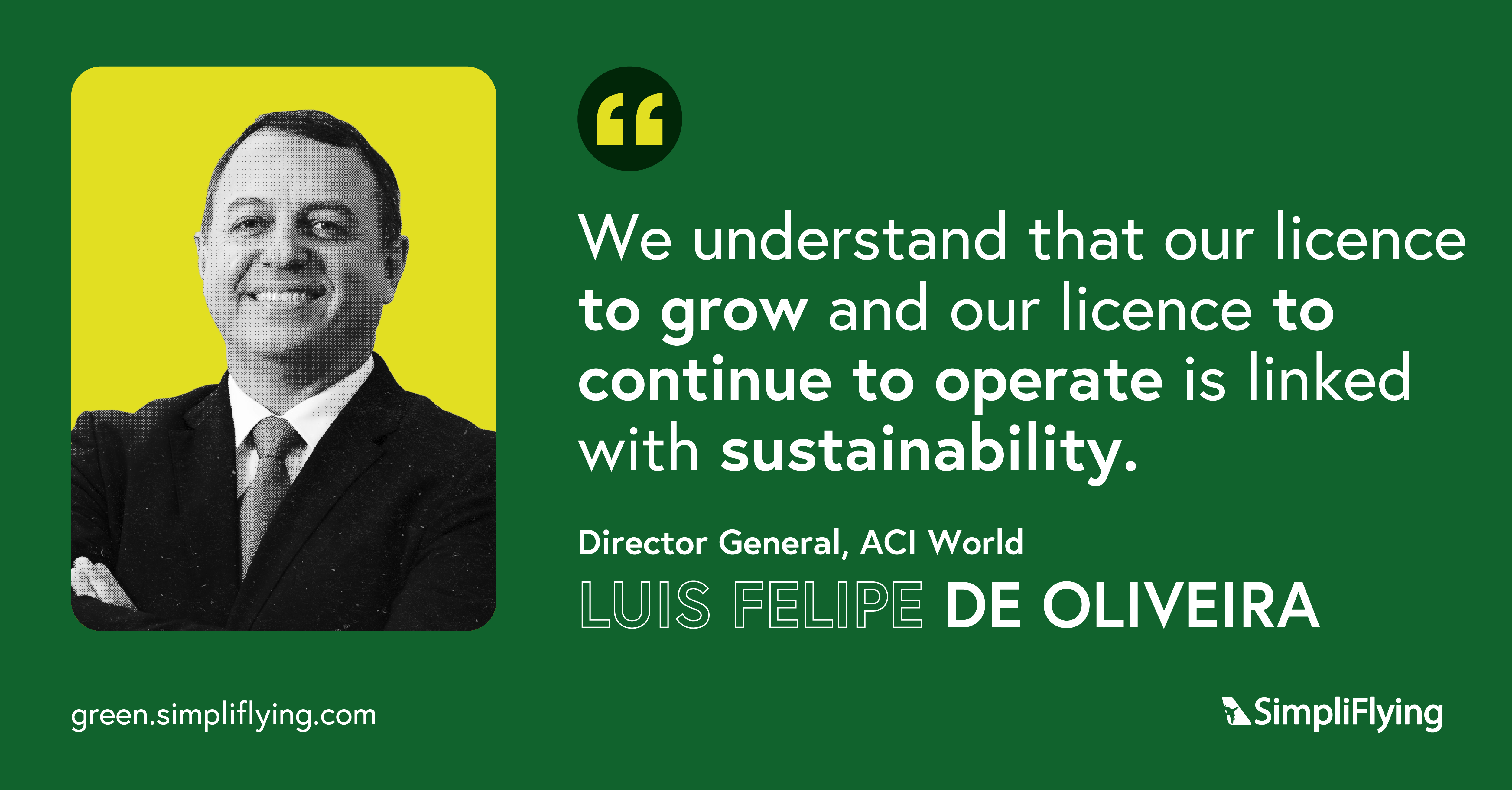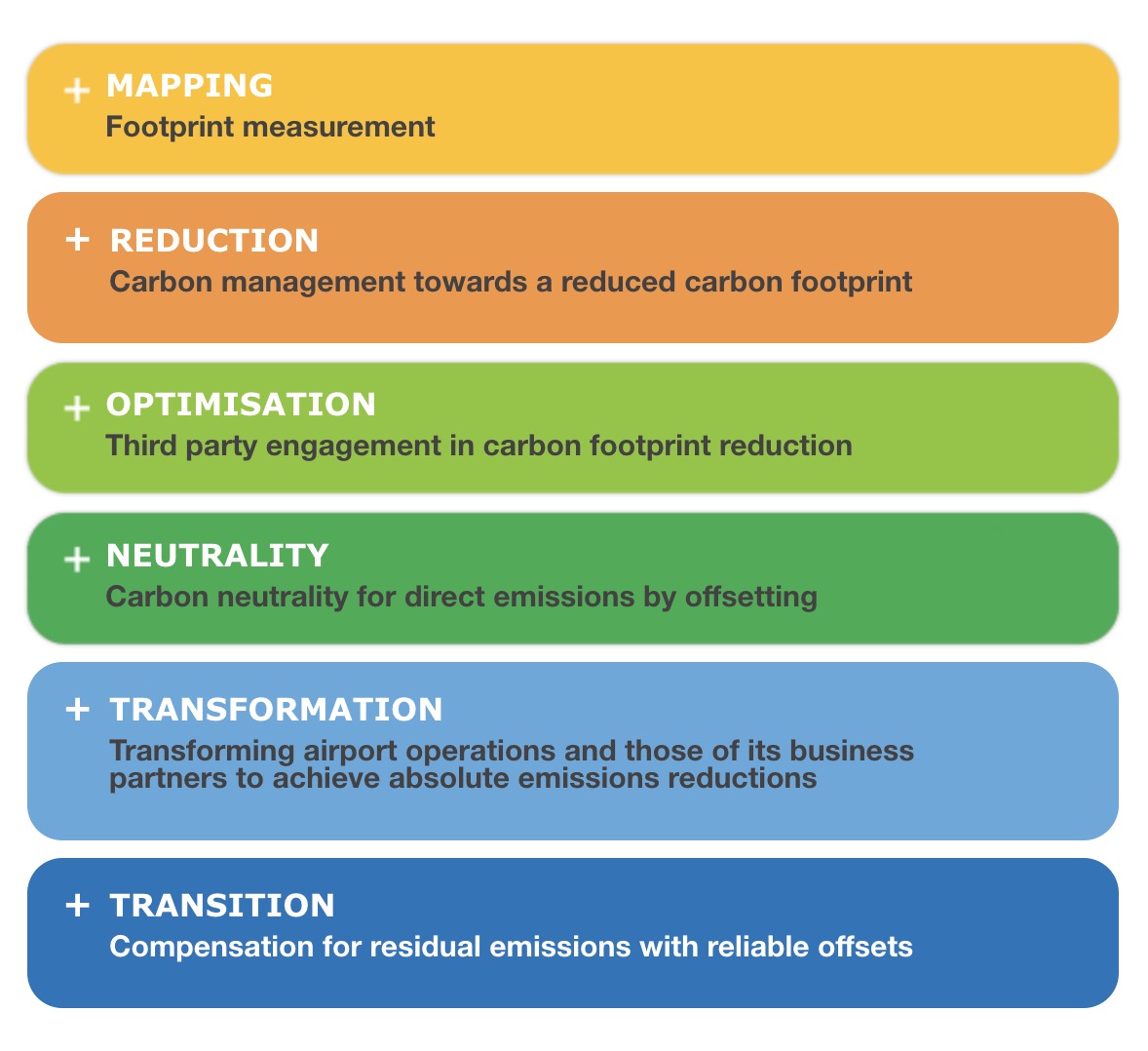ARTICLE
Holly Boyd-Boland, VP Corporate Development & Sustainab ...

Welcome to Season 3 of Sustainability in the Air, the world’s first podcast dedicated to sustainable aviation. Through in-depth conversations with top aviation leaders, we break through the clutter and provide a clear roadmap for a net-zero future.
One of the most important facets of sustainability is that it cannot be pursued in isolation. Especially in aviation, we need actors across the spectrum to work together to bring about change. As significant emitters of greenhouse gases, airports play a pivotal role in aviation’s journey to net zero.
In this episode of our ‘Sustainability in the Air’ podcast, ACI World’s Director General Luis Felipe de Oliveira speaks with SimpliFlying CEO Shashank Nigam and shares how the organisation is supporting airports in their net-zero journey.
Luis Felipe’s career in aviation began when he joined the International Air Transport Association (IATA) in Switzerland to lead fuel and airport campaigns. This was after he had served 12 years working at Shell. Given his background in fossil fuels, he is an ardent supporter of sustainable transformation in aviation and speaks passionately about various themes in airport sustainability in this episode.
You can listen and subscribe to our podcast below or read our deep dive into the episode. If you’re rushed for time, you can also directly jump to your topic of interest by referring to these timestamps:
Representing the interests of airports and airport operators across the world, Airports Council International (ACI) fosters collective action within the industry. It works closely with airports, governments, industry stakeholders, and international organisations like International Civil Aviation Organization (ICAO), to formulate policies, programs, and industry best practices.
With nearly 712 members, and operations spanning 1,925 airports in 171 countries, ACI contributes to the safety, security and sustainability of global aviation. ACI also has a carbon management certification standard for airports that helps airports assess, manage and reduce their CO2 emissions.

On average, airports account for roughly 5% of aviation’s carbon footprint. The majority of these emissions are from ground operations, including energy use for heating, cooling, lighting, and airport vehicles.
Airports have varying carbon footprints due to their geographical, cultural and economic intricacies. This, as Luis Felipe puts it, makes each airport a mystery that needs to be understood and unlocked in its specific context.
Recognising the impact of these emissions on the environment, ACI’s European body ACI Europe launched the Airport Carbon Accreditation program in 2009. The program has since expanded, with nearly 450 airports worldwide enrolled and certified at different accreditation levels.
ACI’s carbon accreditation program is the only voluntary global carbon management standard that helps airports to manage and reduce their carbon footprint. Focusing primarily on CO2 emissions, the program offers a common framework for airports to analyse and identify carbon-intensive activities. It is site-specific and can be used by airports to plan daily as well as long-term sustainability strategy through continuous improvement and stakeholder partnerships.
It comprises six progressively stringent levels of accreditation that address the needs of airports of different sizes that are at various stages of their carbon management journey. The six levels with their specific requirements are as follows:

In 2012, ACI also developed an inventory tool called the Airport Carbon and Emissions Reporting Tool (ACERT) to help airports estimate their carbon emissions. ACERT is a self-contained Excel spreadsheet that doesn’t require environmental or emissions expertise but yields sufficiently accurate results to allow airports to put together a mitigation plan. Particularly useful for smaller airports, the tool is available free of charge.
ACI also works closely with the Aerospace Technology Institute, UK and has launched joint reports to guide airports about the integration of technologies like hydrogen aircraft and sustainable aviation fuels in the airport infrastructure.
Airports play an important role in the aviation industry’s efforts to achieve its net zero emissions goal. The main source of carbon emissions in an airport, Luis Felipe explains, is grid energy. To help airports transition to cleaner energy sources, ACI has partnered with the International Solar Alliance to set up and increase the use of solar energy.
Luis Felipe emphasises that as the impact of climate change becomes more dire each day, airports need to go beyond just carbon neutrality and strive for a carbon-positive status. A carbon-positive airport generates more clean energy than it consumes, resulting in a surplus of renewable energy that can be supplied to the local community. While there are currently no airports that are fully carbon positive, there are some that are working towards this goal. For example, by 2021, Swedavia had successfully achieved fossil-free operations at all 10 of its airports by utilising renewable energy and renewable fuels, such as electricity and biogas.

The aviation sector is often criticised for not doing enough to curb its carbon emissions. This, however, does not imply a dearth of initiatives in the industry but a sheer lack of awareness about them, states Luis Felipe. For example, Airports Council International’s Airport Carbon Accreditation program was instituted over a decade ago, yet it remains relatively unknown.
Luis Felipe believes that aviation is perhaps the one of the most environmentally conscious industries but it fails to convey its efforts to the public. He is convinced that a consistent and cohesive communication strategy will be crucial in allaying such misconceptions.
Given his background in fuels, Luis Felipe is certain that Sustainable Aviation Fuels (SAF) will lead the industry’s trajectory towards a sustainable future. Since SAF production is currently limited due to high prices, a mix of mandates and incentives will be required to catalyse its supply. This would again require the industry actors to work in tandem.
ACI’s carbon accreditation program lays down a framework to help airports manage and reduce their carbon emissions. It helps them navigate the complex subject and take necessary action to mitigate their environmental impact. It also helps airports demonstrate their commitment to sustainability and step up to their environmental responsibility.
The accreditation program neatly outlines the measures for emissions reduction and best practices, but its voluntary nature tends to blunt its teeth. Airports are under no obligation to participate or even work towards a high level of accreditation.
Voluntary initiatives, while a powerful force to create awareness, are not binding. The lack of incentive can deter and undermine their effectiveness. In ACI’s case, while about 450 airports have been accredited as of Feb 2023, only 33 have reached the highest Level 4+ Transition. Interestingly, only three each have been certified in North America and Asia. The remaining 27 airports are all in Europe.
As the aviation industry works towards its net-zero goals and aims to become more sustainable, concerted efforts and a consistent communication strategy, as Luis Felipe pointed out, are absolutely essential. What’s also important is to substantiate every claim made with concrete, actionable steps – to not just drum up sustainability clauses, but to also imbibe the true spirit of it.
Our Sustainability in the Air podcast is powered by SimpliFlying which has been helping build trust in travel for over a decade.
This season of the podcast is brought to you by Cirium and CarbonClick. As a sustainability partner, Cirium helps the aviation industry gain a much clearer view of the carbon emissions and develop methods to reduce them, enabling on the industry promise to fly sustainably. CarbonClick is the industry leader in managing transparent carbon offsetting programs for individuals and top global airlines.
We release a new episode every Wednesday morning, Pacific Time. ✌️
© 2022 SimpliFlying Pte. Ltd.